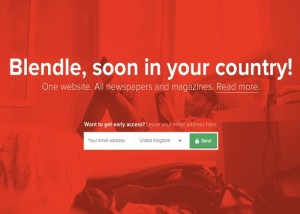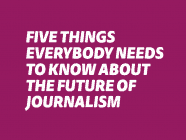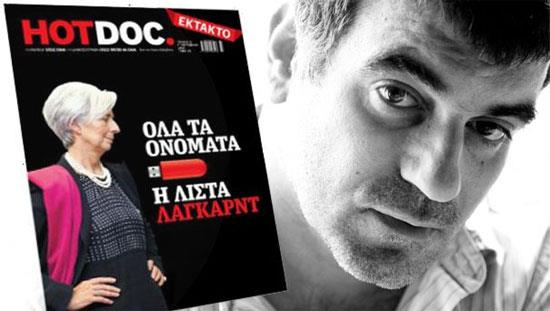One year ago Blendle, a Dutch start-up, was founded with a goal to change how news is read and consumed. No small feat. Yet their micropayment model – readers pay per article, and can choose from a variety of outlets on one platform – soon attracted the attention of The New York Times and Axel Springer, the German publisher, who collectively invested three million Euros.
Alexender Klöpping, 28, the journalist and internet entrepreneur who co-founded Blendle, explained why he believes it has been successful. He said the site attracts a younger generation of news consumers and its business model can help freelance writers. The company already generates profits – despite offering readers the option of a refund on any article.
Currently the website is available in Dutch in the Netherlands, but will soon be expanding internationally.
Micropayments for journalism – or iTunes for news as it is sometimes dubbed – is not a new idea. The concept was first mooted six years ago by David Carr, a former managing editor of Time magazine and journalist, Walter Isaacson. However, it received only a mixed reception from media organisations. It has taken until April this year before the first north American newspaper, the Winnipeg Free Press, announced a micropayments scheme, charging readers 27 Canadian cents per article or a flat monthly fee to get around their paywall.
In 2013, research by Nick Geidner and Denae D’Arcy, two journalism professors at the University of Tennessee, found – although not conclusively – that micropayments threatened to change our reading habits, as consumers were less likely to pay for articles that challenged them, or that they did not agree with.
Publishers set a price per article
At Blendle, publishers decide what they charge for each article. Magazine articles are generally priced between 20 and 40 cents, and newspaper articles between 10 and 20 cents. Some longer, New Yorker-esque pieces can cost up to 80 cents.
“It’s really up to the publisher,” said Klöpping. He added that publishers also decide how much they give to their journalists. “We don’t get involved in the pricing,” he said.
Publishers receive 70 per cent of the profits, while Blendle gets the other 30 per cent. It’s a different model to another micropayments start-up, Niuzy, where freelancers directly receive 80 per cent of the profit per each of their articles published.
Freelancers Can Become Publishers
Blendle signs agreements for articles that appear on the site directly with publishers, but freelance journalists can also sign up to sell their articles on the site – if they are part of a publishing collective. One successful example is TPO Magazine, a group of freelancers that decided to act as their own publisher, in order to receive payments directly.
“TPO is just a name that keeps them together,” Klöpping told the European Journalism Observatory. “But they’re doing really well, and sometimes they’re making more money than a national newspaper.”
Refunds
If a Blendle reader does not like the article, they have the option to receive a refund for it – although this can be limited: Blendle tracks how many articles a person purchases and how often they ask for their money back. If they are judged to have used the function “too much” (exactly what is too much is constantly adjusted, Klöpping said) the refund function disappears from their account. Five per cent of readers have asked for refunds so far, according to Blendle.
Brands Still Matter To Younger People
Young people, 35-years and under, may be turning to traditional news outlets less, but they still gravitate towards brand names for reliable news, according to Klöpping.
Yet there is a reluctance to register at one news website and pay for it because they are not as involved with one publication the way prior generations were. “It’s not as much a part of their identity,” he said.
Readers can now access plenty of news on the net for free, yet they are still willing to pay for interesting, customised content, Klöpping believes. He used the analogy of YouTube: it’s possible to access the world’s music for free on the site, but music lovers are still willing to spend 10 euros a month for Spotify, which helps them select music based on their tastes and gives them the option to pay for individual songs.
“There are so many free sources on the web that it’s very hard if you don’t have a lot of time [to find] what’s relevant for you,” said Klöpping. “And that’s one of the things that we help out with.”
Every day Blendle publishes a ranking of popular stories throughout all magazines and newspapers in the country. Readers can also connect their Twitter and Facebook feeds so that they can get an overview of what their connections are consuming.
“We also have humans selecting what the most interesting articles are,” said Klöpping, so that when readers follow a specific theme, they will receive recommended articles.
Expanding Abroad
The start-up will continue to find new ways of customising news content. Now they are sending personalised daily email newsletters. A reader interested in German football, for example, will receive emails catering to their favourite teams.
Blendle is also working with publishers to integrate its micro-payment platform on their own websites. That way they can sell individual articles without having to purchase a separate paywall system.
Soon Blendle will be expanding outside of Holland, but Klöpping will not disclose to which countries – other than that some are within Europe.
So far Blendle says it has 250,000 users in the Netherlands, less than 2% of the population. The website has not yet spent any money on advertising. But that could change once they venture into new, larger markets.
“So far the platform is working in Holland. That might be because Dutch people are crazy,” said Klöpping with a smile, “but I think it has to do with something else.”
Tags: Blendle, Business model, Journalism, Micropayments, New York Times















































